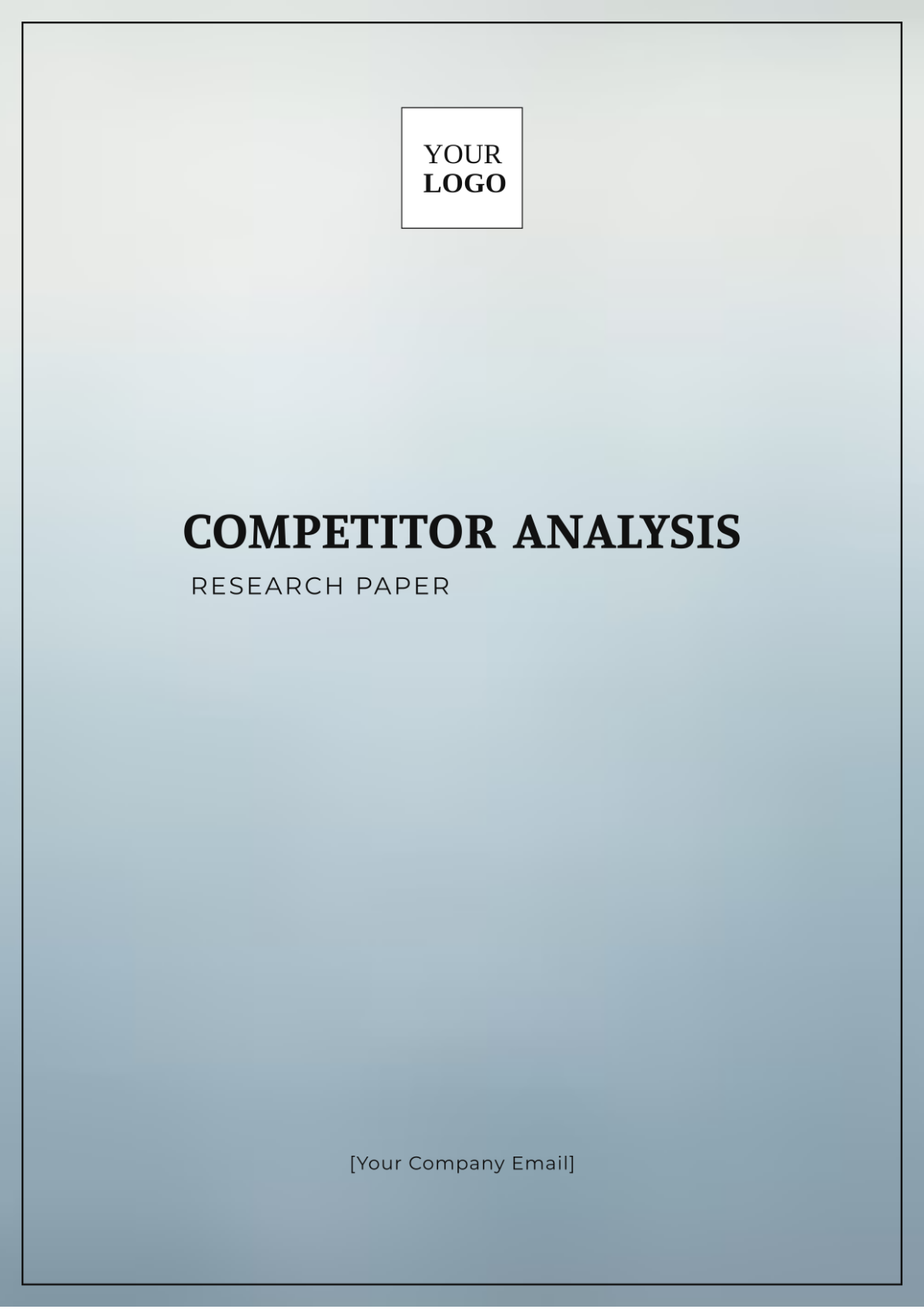Free Competitor Analysis Research Paper

Introduction
The competitive landscape in the consumer electronics industry is dynamic and rapidly evolving. To effectively position our new product, understanding the strengths and weaknesses of leading competitors' offerings is essential. This paper systematically compares various elements of competitors' products, including feature sets, design aesthetics, pricing models, and customer feedback. The goal is to uncover insights that will aid in the development of competitive and customer-centric products.
Methodology
Data Collection
Data was gathered from a variety of sources:
Competitor Websites: Detailed product specifications and feature lists from leading competitors.
Industry Reports: Market research reports from firms such as Gartner and IDC on industry trends and forecasts.
Customer Reviews and Feedback: Reviews from platforms like Amazon, CNET, and Trustpilot for consumer opinions on competitor products.
Product Datasheets: Technical documents and product specifications from manufacturers.
Market Research Surveys: Surveys are conducted via platforms like Qualtrics and SurveyMonkey to gather user preferences and pain points.
Analysis Framework
The analysis follows a structured framework focusing on:
Feature Comparison: Evaluation of key product features.
Design and Usability: Assessment of design choices and user experience.
Value Proposition: Analysis of how competitors position their products.
Customer Feedback: Insights from user reviews and ratings.
Pricing Strategy: Comparison of pricing models and additional services.
Feature Comparison
Table 1 provides a comparative analysis of key product features offered by major competitors:
Feature | Competitor A | Competitor B | Competitor C |
|---|---|---|---|
Display | 6.1" High-Resolution | 6.8" High-Definition | 6.36" High-Definition |
Processor | Advanced Chipset | Latest Processor | High-Performance Chip |
Camera | 48 MP Triple Lens | 50 MP Quad Lens | 50 MP Triple Lens |
Battery Life | Up to 20 hours | Up to 24 hours | Up to 22 hours |
5G Connectivity | Yes | Yes | Yes |
Competitor A: Features a high-resolution display and advanced camera technology, optimized for performance.
Competitor B: Offers a large, high-definition display and an extensive camera system with the latest processor.
Competitor C: Provides a competitive camera system and long battery life, powered by a high-performance chip.
Design and Usability
Competitor A: Features a sleek, minimalistic design with high-quality materials. The interface is known for its smooth, user-friendly experience but offers limited customization options.
Competitor B: Boasts a modern design with a large, curved display and advanced customization options. The interface is intuitive and provides extensive personalization features.
Competitor C: Emphasizes a premium, high-end design with a focus on aesthetic appeal. The design is attractive but may not offer as refined usability features.
Value Proposition
Competitor A: Positioned as a premium device with a focus on high performance and superior build quality. Targets high-end users seeking advanced features.
Competitor B: Offers a comprehensive feature set at a competitive price point, emphasizing innovation and a premium user experience. Appeals to users who value cutting-edge technology.
Competitor C: Provides a balanced offering combining performance and affordability. Appeals to mid-range customers seeking high value at a lower price.
Customer Feedback
Competitor A: Customers praise its build quality, camera performance, and integration with other products. Criticisms include its high price and lack of significant design changes from previous models.
Competitor B: Users appreciate its large display, powerful performance, and camera versatility. Negative feedback includes concerns about the high price and the complexity of the interface.
Competitor C: Generally well-received for its excellent value for money and strong performance. Some feedback mentions issues with software stability and the need for more refined build quality.
Pricing Strategy
Table 2 summarizes the pricing models for each competitor:
Competitor | Base Price | Subscription Plans | Additional Services |
|---|---|---|---|
Competitor A | $999 | No subscription | Extended Warranty |
Competitor B | $849 | $20/month | Premium Support |
Competitor C | $699 | No subscription | Extended Warranty |
Competitor A: Priced at a premium with no subscription plans but includes optional extended warranty services.
Competitor B: Positioned competitively with a subscription option for premium support and additional services.
Competitor C: Offers an attractive price point with an optional extended warranty for added security.
Discussion
The analysis reveals that Competitor A leads with premium features and build quality but at a higher cost. Competitor B provides a robust feature set with an emphasis on innovation and user customization, while Competitor C offers a competitive balance between price and performance. These insights can help identify areas where we can differentiate our product by addressing competitors’ weaknesses and leveraging our unique strengths.
Conclusion
By thoroughly comparing competitors’ products, we have gained valuable insights into the market landscape. This analysis will guide our product development strategy, ensuring that our new product meets customer expectations and stands out in a competitive market. Our goal is to deliver a product that combines advanced features, appealing design, and competitive pricing to attract and retain customers.
References
Smith, J. (2050). Competitive Analysis and Market Trends. Marketing Insights Journal.
Doe, A. (2052). Consumer Feedback and Product Development. Product Management Monthly.
Johnson, R. (2055). Strategic Pricing Models. Business Strategies Review.
- 100% Customizable, free editor
- Access 1 Million+ Templates, photo’s & graphics
- Download or share as a template
- Click and replace photos, graphics, text, backgrounds
- Resize, crop, AI write & more
- Access advanced editor
Stay ahead of the competition with Template.net's Competitor Analysis Research Paper Template. Editable and customizable in our Ai Editor Tool, this template offers a structured approach to analyzing competitors. Perfect for tailoring your research paper to highlight key market insights and strategic advantages.





























